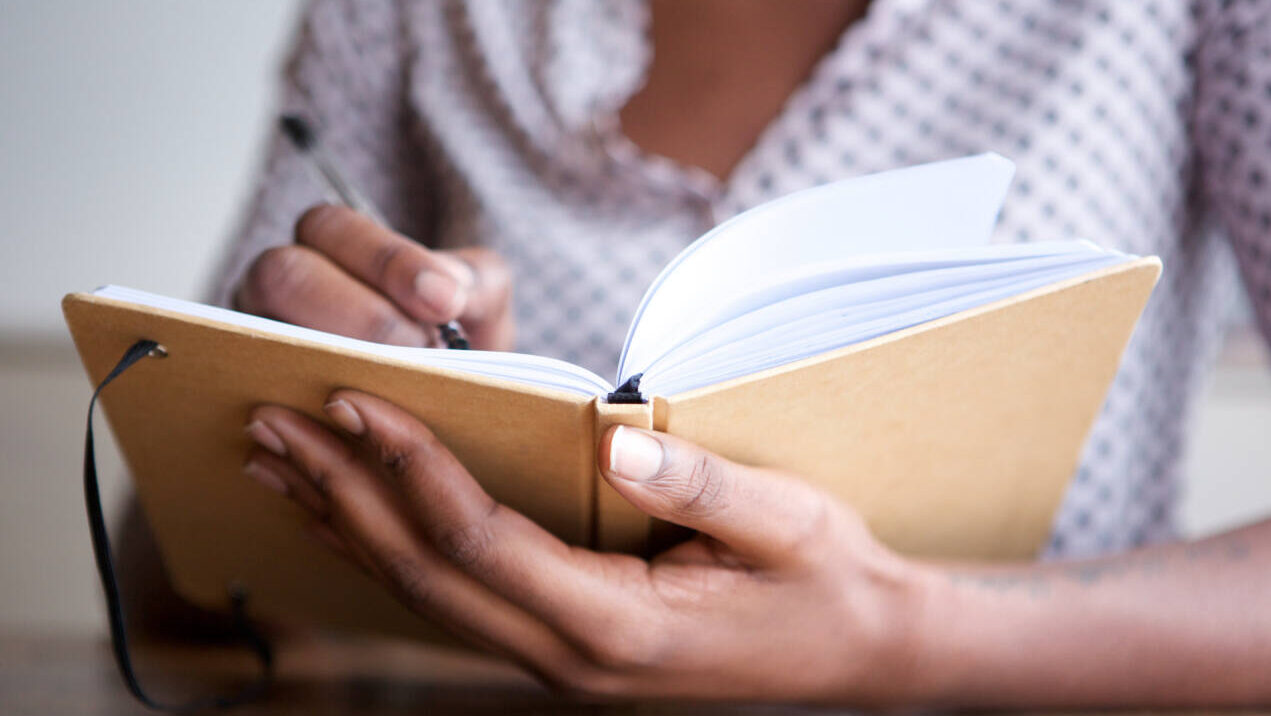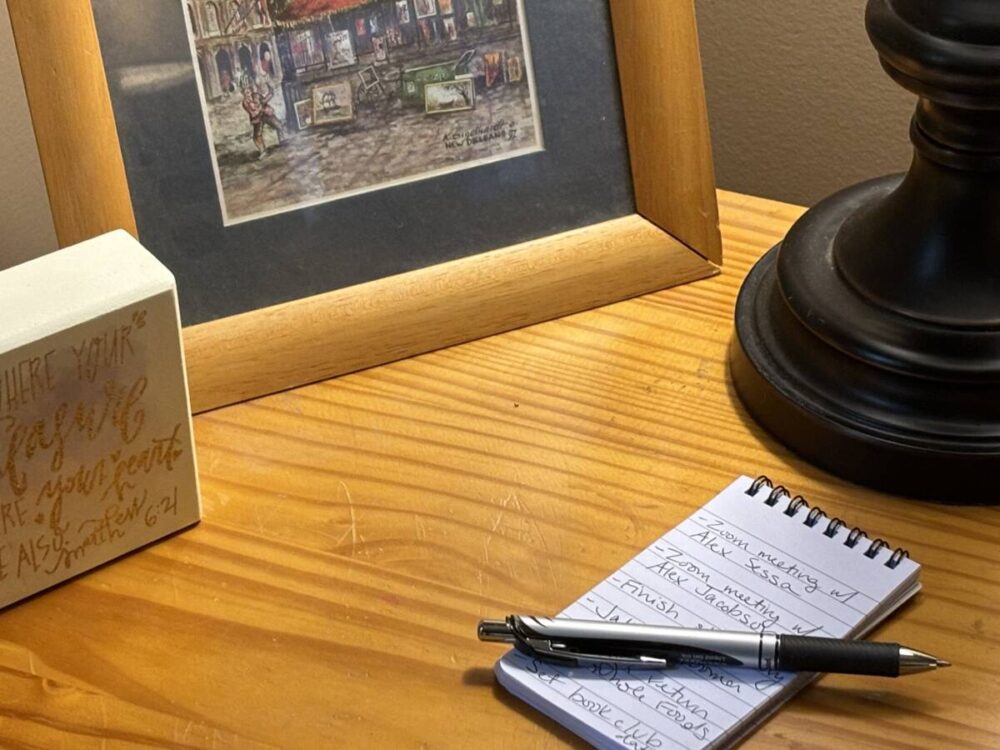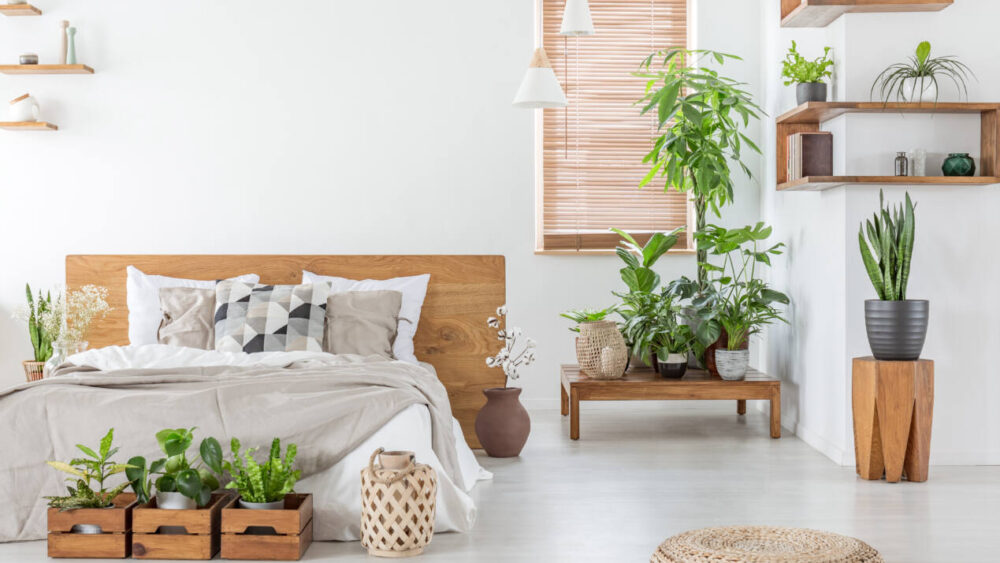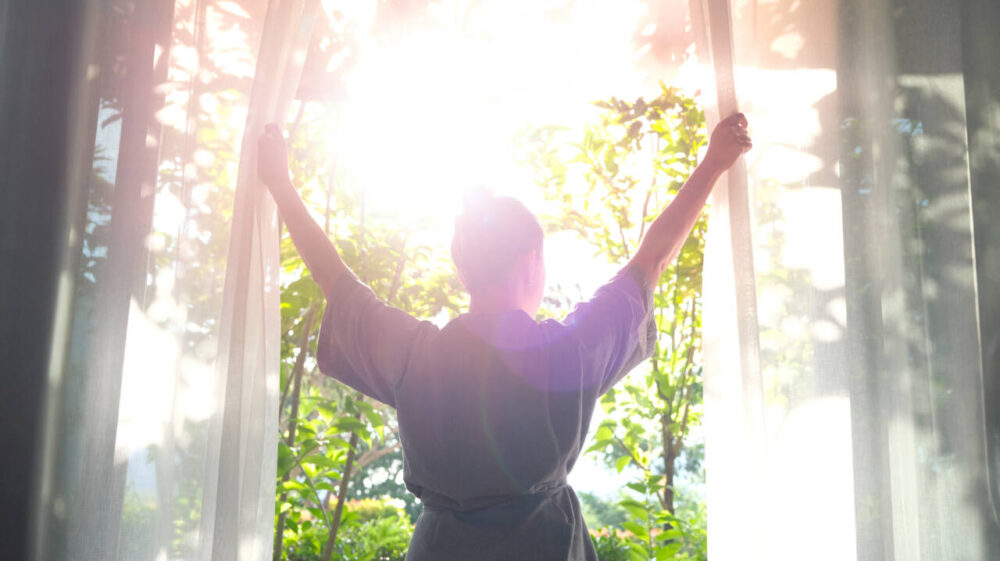Why you should make tomorrow’s to-do list before you go to bed

Generally speaking, making a to-do list can play an integral role in getting stuff done.
The Research
Research from “The Journal of Personality and Social Psychology” has shown that having a plan in place to accomplish an objective not only helps you do it, but it frees up your mind to concentrate on other things.
You’ve got a goal. You’ve got your steps planned out. No need to dwell on it.
But further analysis gets even more specific about list-making. In a study published in “The Journal of Experimental Psychology,” researchers determined that to-do list-making at bedtime was linked to better sleep.
They tested two groups of people:
- Members of group one spent five minutes before bedtime writing a list of their accomplishments from that day.
- Members of group two spent that time writing a to-do list of what they planned to accomplish in the next day or two.
Then they measured how fast the members of each group fell asleep.
The upshot: The participants who wrote to-do lists fell asleep an average of nine minutes faster than those who wrote about what they’d already accomplished that day.
The study also found that those who were the most specific about the tasks on their to-do list fell asleep the fastest.
Anything that helps bring on sleep is worth exploring, so I discussed these findings with productivity and time management consultant, Helene Segura, M.A. Ed., CPO. Then I put the strategy to the test. And I actually learned some lessons that I plan to carry forward.
Here’s what I took away from the experience.
The Science Behind List-Making
Segura isn’t surprised by the study’s results, which she says are backed up by neuroscience as well as her own anecdotal experience.
“There’s a lot of evidence out there that shows when the brain has an actual plan, it functions at a higher efficiency level,” she says. “Knowing that you captured all your thoughts at the end of the work day and at the end of your waking hours, the brain is less likely to wake you in the middle of the night with thoughts of, ‘Did I forget to do xyz?!'”
MORE: 20 things on every busy mom’s invisible to-do list
In her own practice, many of Segura’s clients switched to “home officing” during the pandemic. And in the process, they lost the ability to psychologically transition from work to home. As a result, some clients began having trouble falling or staying asleep, because their brains were carrying all those work thoughts into the time when they should be resting.
So, for some of her clients, she proposed an evening to-do list. Writing out all the tasks that needed to be done the next day was a way of releasing the brain from dwelling on them. The to-do list’s level of detail depended on the client. Some simply needed to do a “brain dump” to get it all out of their head. Others needed more specificity.
For example, one long list wasn’t helpful for the working professionals who were contending with six hours’ worth of meetings the next day. “Their to-do list would end up with 15 hours’ worth of work, and they’d think, ‘How can I possibly get that done?'” she says. In that case, a “brain dump” could actually hinder sleep.
“So, then we talk about, ‘What do you want your realistic to-do list to be tomorrow?'” she says. “We focus on, ‘What are the top three items from that list that are high priority that you really need to do? And what are the time estimations for that?'”
Testing This Strategy
When I tried out this plan for myself, I wrote my list with good, old-fashioned pen and paper. Many people type their to-do lists on their smartphone or computer, but after a day of work, my eyes tend to feel mildly strained and screen-weary at night.
I took Segura’s advice about where to be when writing the list: “Even though it’s just before bed, you would not actually do this in the bedroom,” she says. “Your brain hopefully associates your bedroom with sleep. So do your list somewhere else, like the kitchen table or while sitting on the couch.” I did mine on the living room sofa.
I began my list with professional tasks. I had two Zoom calls scheduled the next day with expert sources for articles I was writing. And I wanted to complete at least one of those articles by the end of the day.
I then debated whether or not to add my daily household tasks to the list. I have a friend who puts absolutely everything on her to-do list, including small chores like unloading the dishwasher, because it allows her to experience the satisfaction of checking off lots of items.
Segura’s take on this? “That might be going off the deep end,” she says — and warns that over-planning can be a form of procrastination. You don’t want the act of creating a to-do list to become a burdensome task in itself.
So, I decided not to include the daily tasks I always do, like making/packing my teenager’s lunch, walking the dogs for 30 minutes, figuring out dinner (buying the ingredients/making it), toning exercises and several other habitual chores.
I did add some planned, personal tasks, like bringing one of my dogs to his grooming appointment, dropping off an Amazon return at Whole Foods and scheduling some summer book club dates. I opted not to estimate the time each would take or to put them in any particular order. I simply jotted them down as I thought of them.
I completed the list and headed off to bed, where I fell asleep easily at around 10 p.m.
My Bedtime To-Do List Experience
After sleeping for about four hours, I awoke from a vivid dream — a nightmare, actually.
In my dream, I “woke up” and realized I’d completely forgotten that I’d booked a six-month excursion to Thailand. My flight was leaving in an hour, and I anxiously thought, “How will I get my to-do list done now?”
As the dream continued, I feverishly scanned my list, determining which tasks could be done at the airport or on the plane, and what I’d now need to pack to accommodate this new situation. I fretted over the fact that I definitely wouldn’t make it to the dog groomer. I woke up in a panic and lay awake for a long time before I was able to wind down from my agitation.
So… needless to say, my first night of evening to-do list-making didn’t go as smoothly as I’d hoped.
Intuitively, I knew that this dream resulted from the timing of my to-do list. Segura and I had discussed this, too. While Segura herself is an advocate of evening to-do lists, she doesn’t recommend the “five minutes before bed” technique.
“If you can do it a little earlier, at whatever you call the end of your work day, it really does help ease you into that recharge time so you’re relaxing at least a little bit when you stop working for the day,” she says. In fact, she personally recommends writing the to-do list at least 30 minutes before bedtime.
MORE: Simple breathing technique can help you fall asleep faster
Modifying The List-Writing Time
Since making my list so close to sleeping triggered a stressful dream, I dropped the right-at-bedtime approach. The next night, I wrote my to-do list at 8 p.m. — two hours before turning in.
Segura notes that this is an especially good strategy for those who write their to-do lists on a digital screen, since screen time before bed can interfere with sleep. Studies show that in some people, the blue light from a smartphone screen can suppress melatonin. (Segura tries to avoid screen time in the few hours before bed, but in case she does use her phone, she has it set to black and white sleep mode from 8:30 p.m. until 5:30 a.m.)
Writing my to-do list at 8 p.m. was a much better strategy for me. It was easy to remember to do it, because I had a natural pause in activities after finishing the dinner dishes and wiping down the kitchen. I had plenty of time to let my mind relax after completing the list, and by the time I went to bed, I fell asleep easily. Even better, my sleep wasn’t interrupted by stressful dreams!
As the week progressed, I felt that security you get from being more organized. I’m not sure that I was more productive than usual, but I certainly experienced a greater feeling of accomplishment. I slept well and felt calm.
By the way, I’ve never been to Thailand, nor do I have any connection to that country. But I would love to visit one day. If I do, I will definitely plan ahead and try to check everything off my to-do list before I depart!
MORE: 18 clever gadgets that will save you time and boost your productivity







